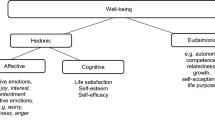The study of adolescence has come of age. Many successful journals now provide researchers with a wide variety of reasonable options for contributing to our understanding of adolescents and their place in society. This article explores these options and offers suggestions to prospective authors, especially those who expect to publish in the Journal of Youth and Adolescence (JYA). This article briefly overviews the scope and audiences of the field's leading journals to emphasize the need to select appropriate publishing outlets. The discussion demonstrates how that selection helps determine the eventual success of submitted manuscripts and influences manuscript effectiveness. The analysis then suggests ways to avoid common errors and to write effective, publishable manuscripts that have a sense of purpose and coherence. The article ends by emphasizing the need to write responsibly, in a way that tempers scientific endeavors with a sense of responsibility to adolescents, their lived environments, broader society and the study of adolescence.
Similar content being viewed by others
REFERENCES
American Psychological Association. (2002). Ethical Principles of Psychologists and Code of Conduct (effective June 1, 2003). http://www.apa.org/ethics/code2002.html#8_10 (Retrieved Dec. 1, 2004).
American Psychological Association. (2001). Publication Manual of the American Psychological Association, 5th edn., Author, Washington, DC.
Bakanic, V., and McPhail, C. (1990). If at first you don't succeed: Review procedures for revised and resubmitted manuscripts. Am. Sociol. 21: 373–391.
Bem, D. J. (2004). Writing the empirical journal article. In Darley, J. M., Zanna, M. P., and Rodiger, H. L., III (eds.), Complete Academic: A Career Guide, 2nd edn., American Psychological Association, Washington, DC, pp. 185–219.
Callaham, M. L., Knopp, R. K., and Gallagher, E. J. (2002). Effect of written feedback by editors on quality of reviews: Two randomized trials. J. Am. Med. Assoc. 287: 2781–2783.
Eberley, S., and Warner, W. K. (1990). Fields or subfields of knowledge: Rejection rates and agreement in peer review. Am. Sociol. 21: 217–231.
Eisenberg, N., Thompson, M. S., Augir, S., and Stanley, E. H. (2002). “Getting in” revisited: An analysis of manuscript characteristics, reviewer's ratings, and acceptance of manuscripts in Psychological Bulletin. Psychol. Bull. 128: 997–1004.
Hodges, C. J., Glenn, C., Gray, L., Miller, R. K., and Webb, S. S. (2004). Hodge's Harbrace Handbook (15th ed.). Harcourt College Publishers, New York.
Larson, R., Cauce, A. M., and Umana-Taylor, A. (2004). SRA and Diversity: The Results of a Membership Survey. http://www.s-r-a.org/SRA.diver.report.htm (Retrieved December 1, 2004).
Lerner, R. M., Fisher, C. B., and Weinberg, R. A. (2000). Toward a science for and of the people: Promoting civil society through the application of developmental science. Child Dev. 71: 11–20.
Rodgers, R., and Rodgers, N. (1999). The sacred spark of academic research. J. Pub. Admini. Res. Theor. 9: 473–492.
Simon, R. J., and Fyfe, J. J. (1994). Editors and Gatekeepers: Getting Published in the Social Science. Rowan and Littlefield, Lanham, MD.
Sternberg, R. J. (2004). The Psychologist's Companion: A Guide to Scientific Writing for Students and Researchers, 4th edn., Cambridge University Press, New York.
Strunk, W., and White, E. B. (2000). The Elements of Style, 4th edn., University of Chicago Press, Chicago, IL.
Tamashiro, D. J., (2003). How to get published: Guidance from journal editors. APS Observ. 16, 27–28.
University of Chicago Press Staff (Ed). (2003). The Chicago Manual of Style, 15th edn., University of Chicago Press, Chicago, IL.
Wilkinson, L., and Task Force on Statistical Inference. (1999). Statistical methods in psychology journals: Guidelines and explanations. Am. Psychol. 54: 594–604.
Williams, J. M. (1990). Style: Writing Toward Clarity and Grace. University of Chicago Press, Chicago, IL.
Author information
Authors and Affiliations
Corresponding author
Appendix
Appendix
Journal of Youth and Adolescence
Editor's 10-point Checklist
-
1.
Does the manuscript contain substantial new results relevant to the study of adolescence?
-
2.
Are well-grounded hypotheses developed and effectively tested?
-
3.
Have the appropriate references been cited?
-
4.
Is the relevant literature appropriately developed and addressed?
-
5.
Are additional analyses needed?
-
6.
Are additional data needed?
-
7.
Can the manuscript be condensed?
-
8.
Does the organization need improvement?
-
9.
Does the writing need improvement?
-
10.
Is the manuscript appropriate for this journal?
Rights and permissions
About this article
Cite this article
Levesque, R.J.R. Reporting Empirical Research on Adolescence: Reflections on the Appeal of Coherence, Purpose and Responsibility. J Youth Adolescence 35, 1–9 (2006). https://doi.org/10.1007/s10964-005-9000-y
Received:
Accepted:
Published:
Issue Date:
DOI: https://doi.org/10.1007/s10964-005-9000-y




